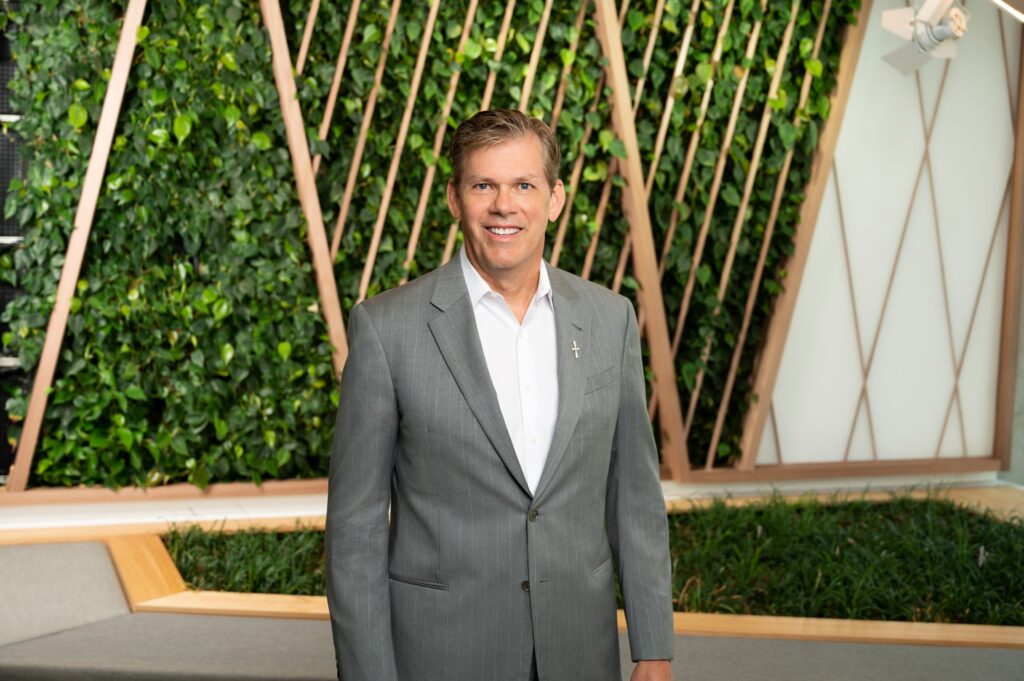The Differences Between Running a Small Company and a Big One

Is it easier to run a small company than a big one? What skills are needed at different stages of a company? Can a big company CEO succeed at a smaller organization and vice versa? Here are some answers from five CEOs (plus myself) who have helmed companies at various stages.
The Five Stages of a Company
There are five basic stages of a company, shown above. In stages one and two, the founders/CEO are trying to build a business. The CEO is basically a glorified project manager attempting to create a viable product and earn some revenue.
The next three stages require a full-time CEO role. Stage three typically starts when the company reaches about 20 employees and has all the major organizational functions in place.
Early-Stage CEO Skills
Start-up CEOs must be concerned first with business model design. Cogito CEO Joshua Feast, characterizes this stage as “pre-product market fit,” where the focus is on answering basic questions: “When we were at that stage we had to answer questions like ‘What does the market really want? Are we solving an important problem? Are we focused on the right customers?'”
This is a make-or-break time for CEOs. If they don’t get the business model right, everything becomes much more difficult.
“Life at that time is survival,” continued Feast. “It’s about having money and bringing in good people. Your overall objective is to try and find the market and discover what you want to do long term.”
Because they must have an all-hands-on-deck mentality, start-up CEOs are often in “player” mode, pitching in here and there to write code, make a sale, or develop marketing plans. The CEO can make a significant contribution doing something he or she excels at, which benefits the organization.
As the company grows and starts building departments for each function, the CEO needs to develop some proficiency in multiple areas of the business. Any CEO at this stage who spends too much time in one or two functional roles – such as sales or marketing – is undermining his executives and not doing his own job effectively.
Feast advised, “You have to know enough about enough functions to be useful. If you haven’t had enough exposure to the different operations in a business, and you don’t know enough theory about how things work, then you have to learn a lot of that on the job, which can take a long time.”
Outsized Influence
Because early stage CEOs must be more hands-on, they can have a great impact on the company’s success or failure.
“In a sense, the yardstick for performance is much higher in the smaller organization,” said Kon Leong, founder and CEO of ZL Technologies. “In the smaller company, CEOs have a whole lot more control. It’s more deterministic. The CEO plays a much more vital role in outcomes and is much more influential in the start-up.”
Because of this influence, Fuze CEO Colin Doherty, who has 10 years of experience leading companies of various sizes, sees being the CEO of a smaller company as the more rewarding job.
“Moving to a smaller company, I think the drive and excitement and motivation is more around, ‘We can actually make decisions here that affect everybody’s future in a positive way and we can get things done,'” said Doherty. “That was the huge ‘aha’ change moment where we thought, ‘We can actually affect our destiny here by doing things slightly differently.’ That was the energizing moment for me. I realized I could never work for a big company again at that point.”
Later-Stage Skills
As their companies grow, CEOs must transition out of “player” mode to become the leader. They must focus on the unique responsibilities of the CEO role, which includes establishing a vision and strategy and delivering performance.
Jim Whitehurst understands the small vs. big dichotomy well. He transitioned from having 80,000 people reporting to him as the COO of Delta to being the CEO of Red Hat, which had 1,500 employees when he started.
“Being a leader and a doer is important in a small company,” said Whitehurst. “As you grow though, the ability to stop doing vs. orchestrating is important. Working through that transition has been fascinating for me. I think that’s where a lot of companies get into trouble. Small company people can’t run big, because they can’t let go. They can’t stop doing. Most big company people couldn’t run a small company, because they can’t actually do.”
Be the Boat Captain – Or the Jockey
Many larger-company CEOs fail because they cannot balance the inherent tension between having limited control over their organizations, but total responsibility for the results. Many overcompensate by trying to micromanage everything. Others focus only on strategy at the expense of operations. The key is in knowing how to influence a company where you can no longer walk around and talk to everyone personally.
Barak Eilam, a first-time CEO who leads a billion-dollar company, NICE, explained it this way: “When you manage a company of six thousand employees you need to understand that in order to shift this large boat five degrees to the right, you need to invest a lot of energy and power, and sometimes overshoot and then correct to the left.”
To put it another way, being a big-company CEO is like being a jockey. No one thinks the jockey is in total control of a thoroughbred racehorse running at 40 miles per hour. Yet the jockey does have influence.
“This is the other thing that hit me when I became CEO,” continued Eilam. “I was managing a subsidiary of the company with a few hundred employees and a big portion of the business, but still I was managing things pretty fast. You can still do this as a CEO, you just need to use different tools.”
Understanding what tools are at their disposal and how to use them is vital – no matter how big or small a CEO’s company is. Big-company CEOs can absolutely succeed at a smaller organization and vice versa, if they know what skills are required at each stage.
First appeared on Inc.com







